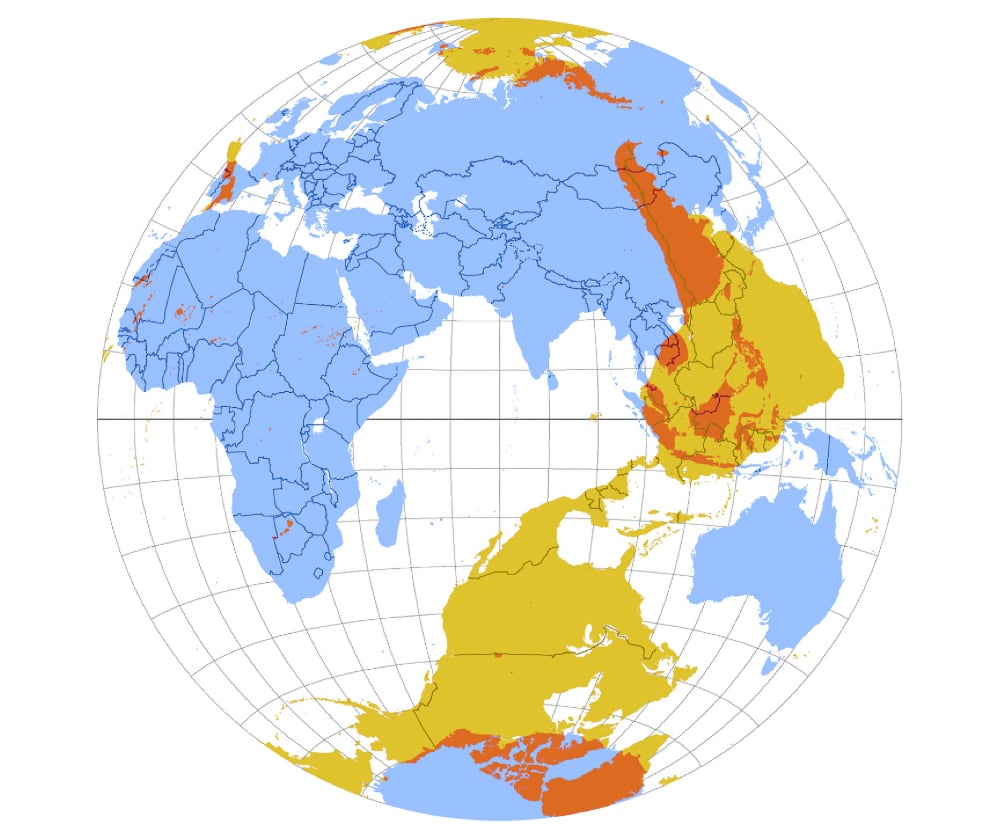When contemplating bandwidth, connective and latency, we like to use the blue whale as an anchor. We’ve brought this up in presentations and realized we’ve never documented our thoughts.
We’ve wondered if the term Robot exists in plural? As more and more devices are connected to the internet, are they individual objects are part of something much larger. We look at ourselves as a human being, not our dividsible parts, organes, cells, bacteria or DNA. We are just the larger organisim. Will robots/phones/wearables/devices in the future be like our cells? Is it naive for us to think of them as individuals or maybe we are in the first phase, a pre-Cambrian device explosion?
No matter what your opinion, there are some physical limiting factors to achieving a single global brain. At the moment it is still impossible to exceed the speed of light. That means our messages passed over copper wires and fiber optic glass can’t go faster than that upper bound.
Your focus shouldn’t be bandwidth, instead: latency!
From Iceland, we found a website we know is hosted in New Zealand. That’s the closest diametrically opposed place from Reykjavik. At the moment when we send ping messages over the internet to the other side of the planet it takes about 560ms to get there and back (RTT Round Trip Time), 280ms each-way. We’ve seen 310ms as a quoted ping speed between Reykjavik and Wellington 17,261km away.

The speed of light is 299,792,458m/s and the Earth’s diameter is 12,756,000m. The fastest possible ping speed is 42.5ms. Currently, we’re still able to improve our speed by one order of magnitude.
If we compare that to the speed of our nervous system, it takes about 10ms for your neurons to send a signal 1 meter. For a tall, 2m (6ft) person, it would take ~20ms for your brain to register your foot stepped on something and the brain to recieve it. Hardware is much faster than wetware, but the distances are also much greater.
Keeping all this in mind, we looked into the largest mammal that has ever lived, the Blue Whale. It is around 30m in length. A nervous system signal traveling at 10ms per meter would take ~300ms for the message to travel from a Blue Whale’s tail through its body to the brain.
Right now, our global internet structure is almost as fast as the nervous system of a Blue Whale, and getting faster as more and cables are laid throughout the ocean.

We’ve built a global nervous system we call the internet and it is the speed of our largest aquatic animals. If an earthquake occurs in California USA, halfway around the globe someone can find out faster than a blue whales detects something has touched its tail. Our global infrastructure is an amazing system which continues to improve. As more and more devices come online, we shouldn’t be thinking of them as stand-alone devices, but as small appendages to a much larger digital organism.
Right now our global internet’s round trip speed is at the Blue Whale stage, but it’s getting faster. Within continents, countries, regions and cities it is even faster! If we compare it to just one-way speeds (like an earthquake announcement) it becomes equivalent to smaller animals.
| Reykjavik | RTT | One-Way | Distance | Animal |
|---|---|---|---|---|
| Wellington | ~310ms | ~155ms | 17261km | Humpback Whale |
| Tokyo | ~290ms | ~145ms | 8802km | Bryde’s Whale |
| Sao Paulo | ~210ms | ~105ms | 9985km | Minke Whale |
| Johannesburg | ~200ms | ~100ms | 10941km | Giant Squid |
| San Francisco | ~167ms | ~84ms | 6758km | Basking Shark |
| New York | ~100ms | ~50ms | 4185km | Giraffe |
| Istanbul | ~80ms | ~40ms | 4121km | African Elephant |
| London | ~35ms | ~18ms | 1888km | Ostriches |
| Carlow | ~28ms | ~14ms | 1521km | Capybara |
| Ping Times from: https://wondernetwork.com/pings/Reykjavik | ||||
Lots of small, fast acting agents animals all scurrying around over the internet, sensing, reacting, trading, talking, gossiping, replicating, voting, trading and more all around under our global feet.